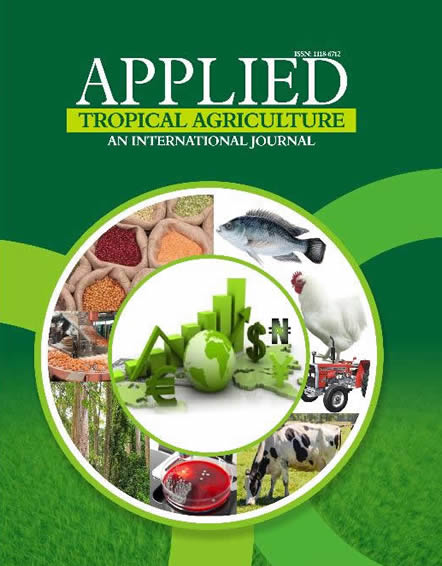Infestation and contamination of flour by the red flour beetle, Triboliumcastaneum (Herbst) is a major constraint to flour storage especially in many households of sub Saharan Africa region. Unlike grain protection, flour protection does not lend itself to the use of plant powders, ash, sand and other admixture-based materials often employed by householders in the region as innocuous and cheap alternatives to synthetic insecticides. Scanty information however exists on how effective the few methods used for stored grains insect pest management will be for stored flour. In this study, flour use and T. castaneummanagement practices of householders in Ilorin, Nigeria was investigated ina survey using questionnaires. Effects of different duration of freezing, sun-drying and hermetic storage treatments on adult and larval mortalityof T. castaneum and on population growth in three commonly stored flour types identified during the survey were also evaluated in the laboratory at the Department of Crop Protection, University of Ilorin, Ilorin Nigeria. Furthermore, the effect of each physical method on organoleptic characteristics of treated flour types was assessed. Results showed that semolina, yam and wheatflours were most preferred by householders in the study area. In addition, 12 hours of freezing and 6 hours of sun-drying significantly (p<0.05)caused complete adult and larvalmortalities (100.0%) whilealso preventing population increases in the three most preferred flour types even after 3 months of post-treatment storage. In contrast, hermetic storage treatment for 336 hours caused lower (p<0.05) mean percentage mortalities (6.0% - 16.0%; 7.0% - 12%) and higher post-treatment storage population changes (11.20 – 16.60; 160.60 – 189.80) of T. castaneumadults and larvae respectively in all the flour types. However, none of the treatments negatively affected the organoleptic characteristics of the flours at p=0.05. Information provided in this study will enhance utilization of locally available physical methods for effective management ofT. castaneumin the stored flours.
Keywords:Flour, Triboliumcastaneum, freezing, sun-drying, hermetic storage, Ilorin


